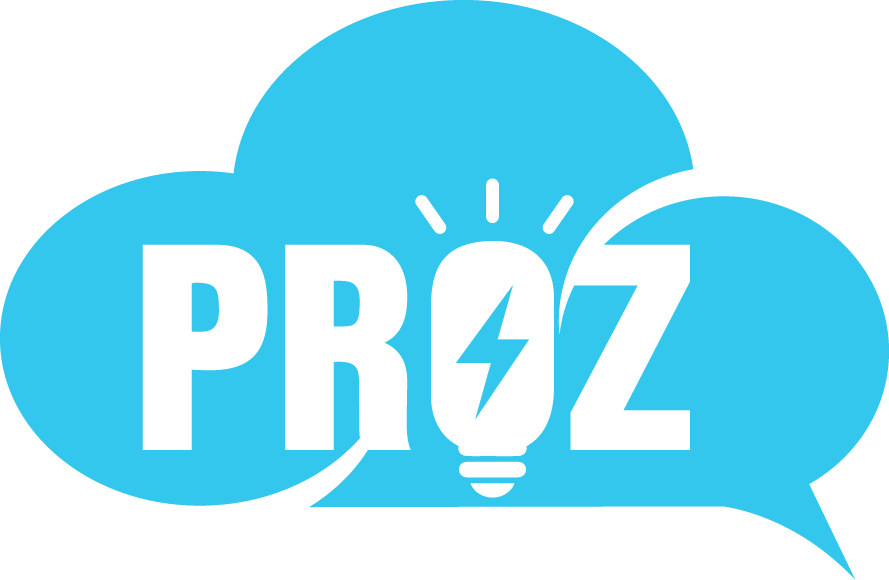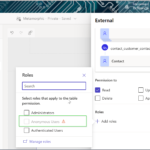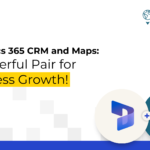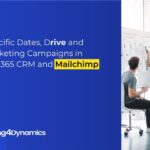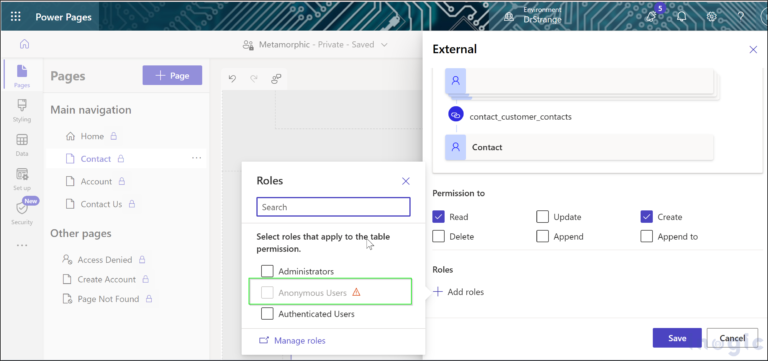Think about a product or service you recently purchased. That favorite new item you’ve been telling all your friends about. What were the ways it caught your attention and convinced you to buy it? What you saw was likely a marketing campaign doing its job.
Great marketing campaigns are fundamental to acquiring customers — and keeping them interested. They can help you find audiences and buyers, and they can build relationships with your existing customers in ways that make sure they stay loyal even in the face of your competition’s fiercest efforts.
But what makes great marketing campaigns, and how do you create them? Let’s break down what marketing campaigns look like in today’s marketplace, how they take advantage of emerging AI capabilities, and what you can do to make campaigns that convert and retain customers.
What’s next for generative AI and marketing?
Learn what’s ahead for this technology and see new ways you can use it to connect with your customers. Our latest research tells you all you need to know.


What is a marketing campaign?
Marketing campaigns are a series of strategic actions designed to promote specific business products and goals executed within a set timeframe.
A full-funnel marketing campaign is the journey potential consumers make from their very first engagement with a brand to buying a product or service.
The top of the funnel represents people who have little to no experience with a brand. The goal of a campaign at this stage is to improve your brand awareness and traffic to a website, mobile app, or in-person location. Examples of paid awareness campaigns include content syndication, display advertising, and social media advertising.
Organic marketing campaign tactics (unpaid) usually aim to improve the website’s search engine optimization (SEO). You can do this by creating content for your company’s blogs and social media handles, plus things like explainer videos and how-to guides.
Upper-funnel consumers (sometimes called cold leads) become contacts or warm leads when they take action by providing their contact details. In this middle part of the funnel, you can further educate them by giving them relevant content, offers, and recommendations based on their browsing behavior. You can also use that contact information to send them personalized promotions and offers.
The bottom of the funnel is where contacts and warm leads are close to making a purchase. You can accelerate this stage with offers that drive urgency. These can include purchase incentives with discounts, free shipping offers, free samples, or personalized demos. It might also include case studies or customer stories that demonstrate why your product is superior to competing offerings.
Get articles about marketing selected just for you, in your inbox
What are the different types of marketing campaigns?
Awareness-focused campaigns introduce a brand or product to a broader audience. They increase visibility and establish authority on topics through visual branding and thought leadership. These campaigns build an audience that may not be ready to buy now but will think of you when they are ready. An awareness campaign lays the foundation for converting into sales in later stages.
Acquisition campaigns persuade prospects to take a specific action, such as providing their contact information or perhaps make their first purchase using a limited-time offer. These campaigns are designed to quickly convert your interested contacts and leads into paying customers.
Engagement campaigns nurture meaningful relationships with your existing and potential customers. They build trust with personalized content, inspiring stories, solutions to customer’ concerns, and opportunities to give feedback.
Upsell and cross-sell campaigns encourage customers to purchase higher-value or premium products or services instead of their initial purchase, or complementary products in addition to it.
Loyalty and referral-focused campaigns encourage your existing customers to become brand advocates. They are rewarded with exclusive, personalized experiences and promotions, and incentivized to spread the word.
No matter the campaign type, you can apply the following tactics to each to meet your customers where they are on their specific journey.
Social media
You can promote products and services on social media platforms by targeting specific audiences based on demographics and online behaviors. Grow your community with content that educates, entertains, and inspires.
Search
In paid search advertising, often referred to as pay-per-click (PPC) advertising, you bid on specific keywords relevant to your target audience. When users search for these keywords, your ads appear at the top or bottom of the search engine results page (SERP), marked as “sponsored” or “ad.” Paid search lets you prominently appear in search engine results and target your customers with precision.
In organic search, you publish relevant content using SEO best practices to rank on the search page, rather than paying for the search result.
Display ads
Create beautiful visual content like banners, images, and videos to promote your products, services, or brands. You can strategically place your visual content on relevant websites or platforms to reach targeted users.
Direct mail
Sending physical mail is still very effective. Postcards, letters, brochures, catalogs, or gift boxes targeted at a mailbox allow potential customers to see and touch your marketing materials.
We found that email use has increased year over year, accounting for 80% of all outbound messaging. A strong email marketing strategy gives your customers valuable information on a regular basis. Email is also a great source of first-party data and helps with lead generation, brand awareness, and engagement between purchases.
Mobile
These marketing campaigns connect with consumers through channels like mobile apps, SMS, social media, messaging apps, and mobile websites to deliver targeted messages, promotions, and two-way engagement opportunities. Mobile marketing aims to increase brand awareness, customer engagement, customer service workflows, and ultimately long-term business growth in a mobile-first world.
5 ways to make your marketing campaigns cut through the noise
The competition for attention is fierce. Fully understanding and mastering these five things will put you a step ahead.
- Personalization
Personalization is understanding customers changing needs and preferences in real-time – and delivering what they’re looking for. Real-time personalization technology automates data and decision-making to provide relevant recommendations and offers. It dramatically increases conversion rates and customer satisfaction.
- Measurement
Setting up key performance indicators (KPIs) and regularly monitoring metrics like conversion rates, click-through rates, and return on investment (ROI) will help you make data-driven decisions to optimize future campaigns.
Attribution models and marketing automation platforms help measure the impact of each marketing channel, using a deeper understanding of customer preferences and journey touchpoints.
- Loyalty
Specialized offers and rewards make customers feel recognized, understood, and appreciated. Spend the time to understand your business’s potential key loyalty moments and optimize for your customers. Loyalty management powered by consistent data and AI is increasingly becoming part of the marketing campaign playbook.
- Speed
Customer expectations are shifting to real-time engagement. You need to automate workflows for manual tasks in data, content, campaign orchestration, and reporting. Predictive and generative AI can help you strategize and create content fast.
- Data
First-party data collection is helping brands with customer understanding, segmentation, and personalization. Proper first-party data management requires a customer data platform, which unifies data sources into a single profile to execute automated campaigns.
Move your personalization beyond segmentation
Reaching many people on an individual level used to be a dream. Well, it’s now reality – and something marketers need to do. Here’s how.



What are the biggest challenges with marketing campaigns today?
As marketers, we are faced with having to:
- Compete in a crowded marketplace
- Manage customer expectations for a tailored experience
- Create a seamless omni-channel engagement experience
- Understand the changing consumer data protection laws
Customers tune out when their browser, inbox or mailbox is overfilled with content. Making the effort to balance customer personalization with a reasonable amount of communications will result in long term trust.
How AI is impacting marketing campaigns
The demand for data-driven, personalized, and scalable customer experiences has placed AI center stage.
Marketers building campaigns can use AI as an assistant to improve the customer journey. You can resolve customer identity issues and drive personalized offers in real time. AI saves time and money automating customer interactions, data analytics integration, and process reporting – tasks that will free up time for strategy and other work.
While your customers are more online now than ever before, 43% still say they prefer non-digital channels. AI can help bridge the gap between online and offline experiences. With AI enabling seamless data management, you can predict customer insights faster, then quickly fine-tune segmentation and targeting to engage customers in the ways they prefer.
The two main types of AI that can be most useful in building and optimizing marketing campaigns are generative AI and predictive AI. Predictive AI is useful in learning from and predicting customer behaviors. For example, it might learn when customers are most likely to open emails, and tailor send times so that your messages only reach your audience when they’re most likely to be receptive to them.
Silvio Savarese, chief scientist of Salesforce AI, defines generative AI as: “AI that doesn’t just classify or predict, but creates content of its own, be it text, imagery, video, or even executable code. And, it does so with a human-like command of language.”
Generative AI helps with contact creation, by allowing marketers to personalize content at scale. For example, a marketer may write one version of an email, then use Generative AI to quickly customize versions of that email for fifteen different audiences.
The ability to create new content from large language models is captivating, and yet the tension between generative AI’s ability to improve the customer experience and customers’ caution around the technology’s risks is understandable.
Now is the time to ask, How can we use AI responsibly? How are human workers validating AI output?
How to gauge success and optimize marketing campaigns
It’s essential you use customer insights to track the effectiveness of your marketing campaigns and optimize your online content.
Say you’re a mid-sized e-commerce apparel company launching an awareness-focused campaign aimed at young professionals. Once you’ve introduced and increased visibility of your brand or product – establishing authority through thought leadership – you can use Google Analytics to look at website traffic, user engagement metrics, and click-through rates. You can also use social media analytics platforms to monitor social media engagement, audience demographics, and sentiment analysis.
User-friendly feedback forms is another way to collect brand preferences and perceptions of the awareness-focused campaign. Marketing organizations today are increasingly consolidating these different sets of data and insights into a single view. With insights in hand, you can build upon your strategy and move into building a full-funnel marketing campaign strategy.
A strong marketing campaign uses tech advances to reach and win customers who crave speed and personalization. Businesses that use new ways to efficiently measure and respond to customer needs will stand out and build loyalty and trust. Businesses that capitalize on the power of predictive and generative AI to cater to their customers at a one-to-one level of personalized outreach will build even more.
Use AI to personalize every interaction
Learn how you can increase conversions and be more efficient. With Marketing Cloud, you can put your customers at the center of everything you do.



